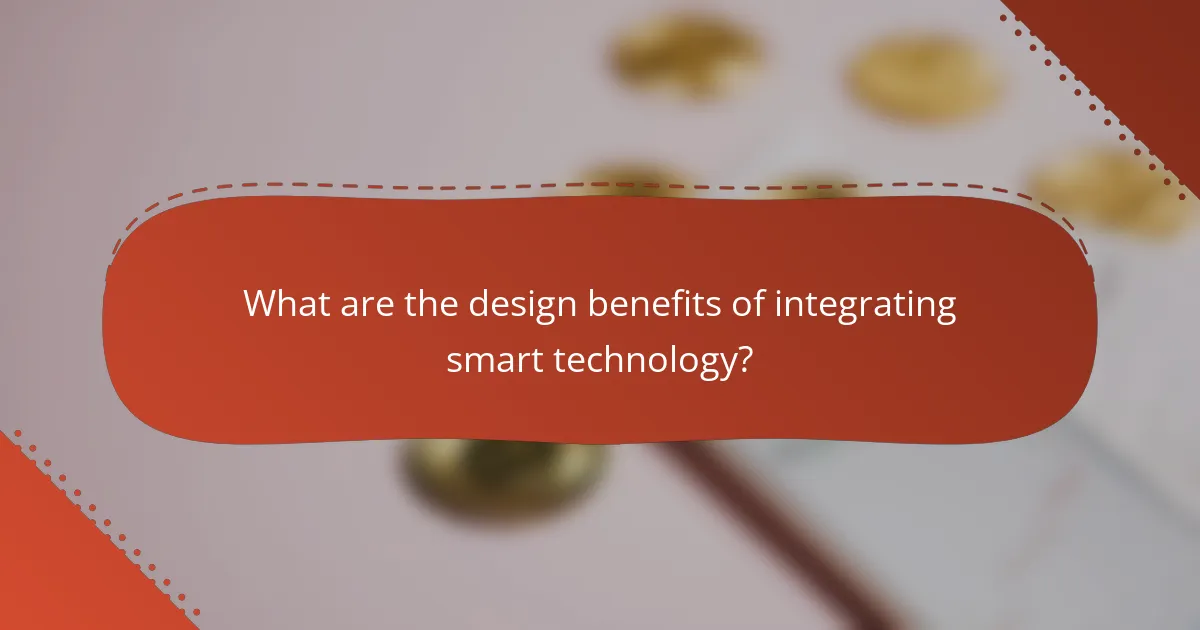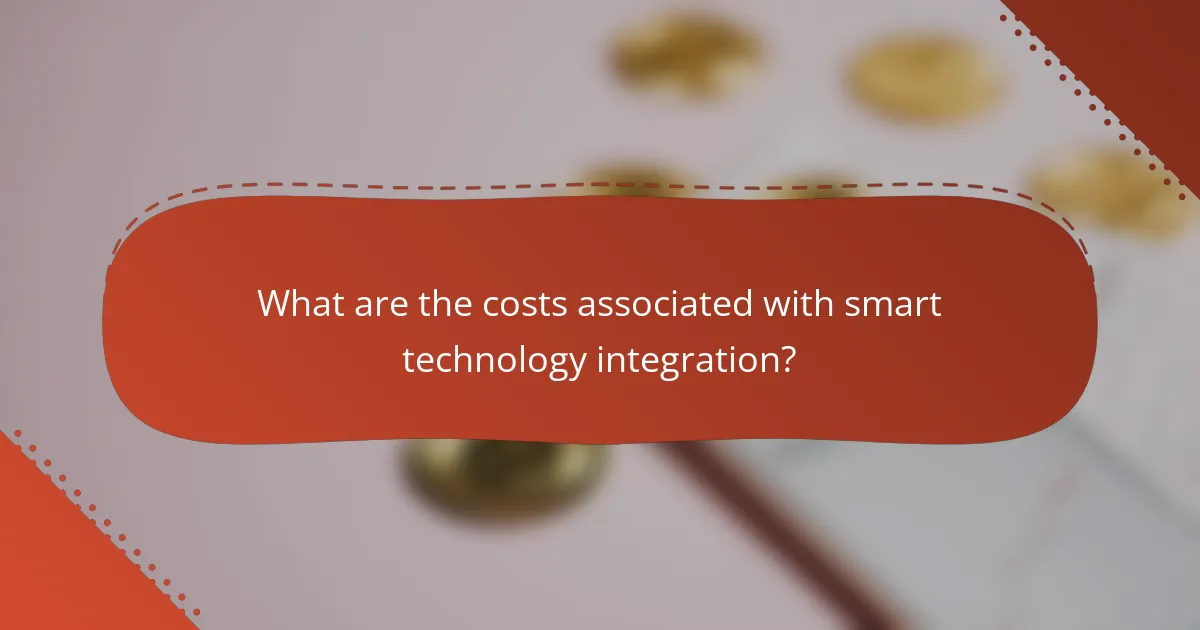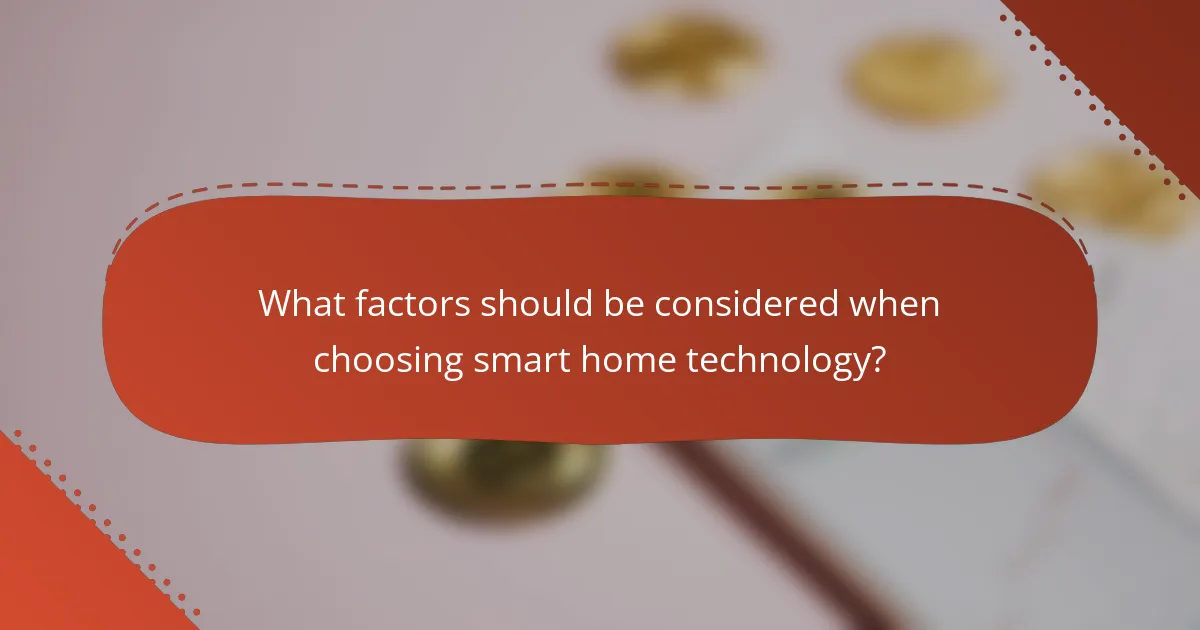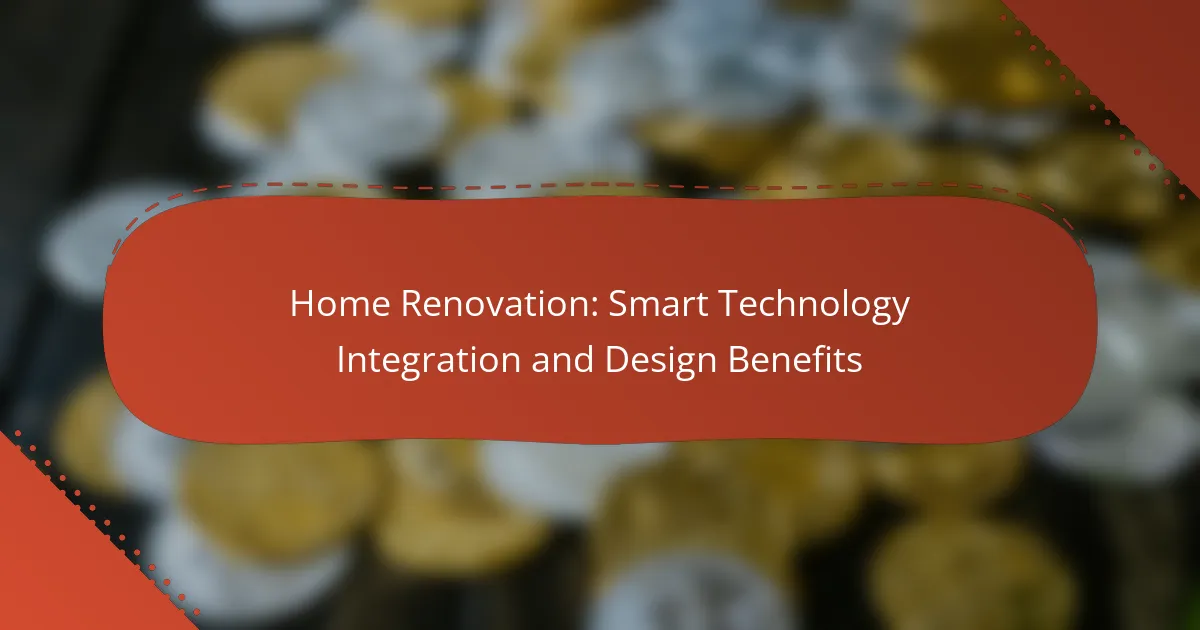Integrating smart technology into home renovation can transform living spaces by enhancing energy efficiency, convenience, and security. These advancements not only improve functionality and comfort but also increase property value, making homes more appealing and sustainable for the future.

How can smart technology enhance home renovation in Los Angeles?
Smart technology can significantly enhance home renovation in Los Angeles by improving energy efficiency, convenience, and security. Integrating these systems can lead to increased property value and a more comfortable living environment.
Smart lighting systems
Smart lighting systems allow homeowners to control their lights remotely or automate them based on schedules or occupancy. In Los Angeles, where energy costs can be high, these systems can help reduce electricity bills by using energy-efficient LED bulbs and optimizing usage.
Consider systems that offer features like dimming, color changing, and integration with other smart home devices. Popular options include Philips Hue and Lutron, which can be tailored to fit various design aesthetics.
Automated climate control
Automated climate control systems enable precise temperature regulation, which is crucial in Los Angeles’ varying climate. Smart thermostats, such as Nest or Ecobee, learn your habits and adjust settings accordingly, leading to energy savings.
When integrating climate control, consider zoning systems that allow different areas of your home to maintain separate temperatures. This can enhance comfort and efficiency, especially in larger homes.
Home security integration
Integrating smart security systems enhances safety and peace of mind for homeowners in Los Angeles. Features like smart cameras, doorbell cameras, and motion sensors can be monitored remotely, providing real-time alerts and recordings.
Choose systems that offer compatibility with other smart home devices for a cohesive security strategy. Popular brands include Ring and Arlo, which provide user-friendly apps for easy management.
Smart appliances
Smart appliances, such as refrigerators, ovens, and washing machines, can streamline daily tasks and improve energy efficiency. In Los Angeles, these appliances often come with features that allow remote monitoring and control, which can save time and resources.
When selecting smart appliances, look for Energy Star ratings to ensure they meet efficiency standards. Brands like Samsung and LG offer a range of options that integrate well with other smart home technologies.
Voice-controlled systems
Voice-controlled systems, such as Amazon Alexa or Google Assistant, add convenience to home renovation by allowing hands-free control of various devices. This can include lighting, climate control, and security systems, making daily routines more efficient.
To maximize the benefits, ensure that all smart devices are compatible with your chosen voice assistant. This integration can simplify control and enhance the overall smart home experience.

What are the design benefits of integrating smart technology?
Integrating smart technology into home design offers numerous benefits, including improved functionality, enhanced comfort, and increased energy efficiency. These advancements not only elevate the living experience but also contribute to long-term savings and property value.
Improved energy efficiency
Smart technology significantly enhances energy efficiency by allowing homeowners to monitor and control energy usage in real-time. Devices such as smart thermostats can learn your schedule and adjust heating or cooling accordingly, potentially reducing energy bills by 10-20%.
Additionally, smart lighting systems can automatically turn off when rooms are unoccupied, further conserving energy. Homeowners should consider integrating energy-efficient appliances that can be controlled remotely for optimal performance.
Enhanced convenience
Smart technology brings unparalleled convenience to daily life. With voice-activated assistants and mobile apps, homeowners can control lighting, security systems, and appliances from anywhere, making it easier to manage household tasks.
For example, smart door locks allow for keyless entry, enabling you to grant access to guests remotely. This level of control not only simplifies routines but also enhances security and peace of mind.
Increased property value
Homes equipped with smart technology often see an increase in property value. Potential buyers are increasingly looking for modern conveniences, and homes with integrated smart systems can stand out in a competitive market.
Investing in smart home features can yield a return on investment of around 5-10% when selling. Key features that appeal to buyers include smart security systems, energy-efficient appliances, and integrated home automation systems.
Personalized living spaces
Smart technology allows for the customization of living spaces to fit individual preferences. Homeowners can program lighting, temperature, and entertainment systems to create the ideal atmosphere for any occasion.
For instance, smart blinds can adjust based on the time of day or sunlight exposure, enhancing comfort and privacy. This level of personalization not only improves daily living but also contributes to a unique home environment that reflects personal style.

What are the costs associated with smart technology integration?
The costs of integrating smart technology into home renovation projects can vary widely based on the type of systems chosen and the complexity of installation. Homeowners should consider initial installation costs, potential long-term savings on utilities, and ongoing maintenance expenses.
Initial installation costs
Initial installation costs for smart technology can range from a few hundred to several thousand dollars, depending on the systems selected. Basic smart devices like thermostats or lighting can be relatively inexpensive, while comprehensive home automation systems may require significant investment.
It’s essential to account for both equipment and labor costs. Hiring professionals for installation can add to the overall expense, but it ensures proper setup and integration of various devices.
Long-term savings on utilities
Integrating smart technology can lead to substantial long-term savings on utility bills. Smart thermostats, for example, can optimize heating and cooling schedules, potentially reducing energy consumption by 10-20%. Similarly, smart lighting systems can minimize electricity usage through automation and energy-efficient bulbs.
While the upfront costs might be high, the savings over time can offset these expenses. Homeowners should analyze their current utility bills to estimate potential savings from smart technology integration.
Maintenance and upgrades
Ongoing maintenance and upgrades are essential considerations when integrating smart technology. Regular software updates and occasional hardware replacements may be necessary to ensure optimal performance and security. Budgeting for these costs can help avoid unexpected expenses.
Homeowners should also stay informed about new technologies and features that can enhance their systems. Upgrading to newer models or adding additional devices can improve functionality but may require additional investment over time.

What factors should be considered when choosing smart home technology?
When selecting smart home technology, consider compatibility with existing systems, scalability for future upgrades, and user-friendliness. These factors ensure that your investment integrates seamlessly and remains functional as your needs evolve.
Compatibility with existing systems
Ensure that the smart home technology you choose is compatible with your current systems, such as lighting, heating, and security. Compatibility can save you time and money by avoiding the need for extensive rewiring or additional devices.
Check for standard protocols like Zigbee, Z-Wave, or Wi-Fi, which can help unify various devices. For instance, a smart thermostat should easily connect with your HVAC system to function properly.
Scalability for future upgrades
Scalability is crucial for adapting your smart home as technology advances or your needs change. Choose systems that allow for easy addition of new devices without requiring a complete overhaul.
Look for platforms that support a wide range of devices and offer regular updates. This way, you can start with a few devices and expand over time, ensuring your home remains up-to-date with the latest innovations.
User-friendliness
User-friendliness is essential for ensuring that all household members can easily operate the smart technology. Intuitive interfaces and straightforward installation processes can significantly enhance your experience.
Consider systems that offer mobile apps or voice control options, making it easier to manage your devices. A good rule of thumb is to choose products with positive user reviews regarding ease of use and setup.

How does smart technology impact home renovation timelines?
Smart technology can significantly streamline home renovation timelines by enabling faster installations and enhancing project coordination. However, integrating these systems may also introduce potential delays that homeowners should be aware of.
Faster installation with pre-configured systems
Pre-configured smart home systems allow for quicker installation compared to traditional setups. These systems come ready to use, reducing the time spent on configuration and troubleshooting during the renovation process.
For example, smart lighting kits that are already programmed can be installed in a fraction of the time it takes to set up individual components. This efficiency can save homeowners both time and labor costs, making it a practical choice for renovations.
Potential delays due to technology integration
While smart technology can speed up certain aspects of renovations, integrating complex systems may lead to unexpected delays. Customization and compatibility issues can arise, particularly if existing infrastructure needs upgrades to support new technology.
Homeowners should anticipate potential setbacks by allowing extra time for technology integration. Consulting with professionals who specialize in smart home installations can help mitigate these delays and ensure a smoother renovation process.
